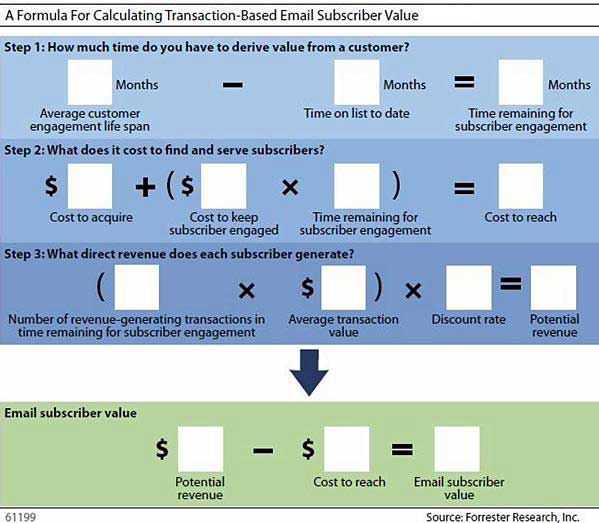Many interactive marketers rely on email subscriber valuation (ESV) to justify budgets and plan messaging strategies, according to a new report by Forrester Research, which presents a three-step formula for calculating ESV.
In 2008, Forrester introduced an ESV formula to help email marketers determine the relative value of email subscribers. In Forrester's new report, the research firm offers an updated formula for calculating ESV.
Below, a synopis of the new ESV formula, issued by Forrester:
- Find out how much time you have to derive value from a subscriber. Calculate the estimated duration a subscriber will stay engaged with your email program (e.g., opens, clicks, conversions within a given time period), then subtract each subscriber's current time-on-file from her projected engaged tenure to determine the time remaining for engagement.
- Determine the cost of acquiring and serving a subscriber. Acquisition costs can include list-rental, creative, and other development costs. Costs to serve email subscribers inlude message delivery (i.e., CPM fees), creative development, content management and hosting, staffing, and list-hygiene services.
- Calculate the direct revenues from each subscriber. Estimate the direct revenues (sales, account upgrades, bookings, etc.) generated via the email channel. If necessary, consult finance partners to adjust projected revenue back to present value using your organization's discount rate.

Finally, to determine ESV, subtract the costs from the direct revenue.
Forrester's formula offers a basic framework for calculating ESV; however, it tells only part of the story, according to the report. To gain a richer picture of ESV, marketers should consider additional factors such as brand impact, cross-channel acquisition and engagement, influence status, and cost avoidance.
About the research: Findings are from Forrester's report titled "What's an Email Subscriber Worth?," issued on February 1, 2012.



